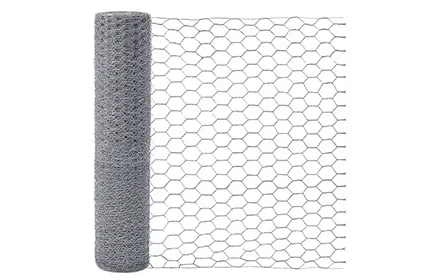-
 Phone:
Phone: -
 Email:
Email:

concertina wire fence
The Intricate Role of Concertina Wire Fences in Security and Defense
Concertina wire fences have become an essential element in modern security strategies, providing a formidable barrier that deters unauthorized entry and enhances safety in both civilian and military contexts. Characterized by their spiral design and sharp barbs, these fences serve as a physical and psychological deterrent, instilling a sense of security while also being a practical solution for boundary reinforcement.
Historical Background
The origins of concertina wire can be traced back to the early 20th century, developed as an efficient means of fortifying military encampments. This type of barbed wire quickly proved its effectiveness during World War I, when it was used extensively on the front lines to hinder enemy advances. Since then, the design has evolved, but the fundamental components have remained the same strong wire, sharp barbs, and a coiled structure that allows for easy deployment and storage.
Design and Features
Concertina wire typically consists of a series of sharp blades or barbs that are affixed to a wire coil. This design creates a tangled barrier that is difficult to navigate or breach. The wire can be deployed on the ground, attached to existing fences, or used as standalone security measures. Its versatility allows concertina wire to be used in a variety of environments, from military bases and correctional facilities to private properties and event venues.
One of the key advantages of concertina wire is its ability to act as both a physical barrier and a visual deterrent. The intimidating appearance of sharp edges and tangled wire conveys a clear message unauthorized entry is strongly discouraged. This psychological effect is often as important as the actual physical barrier, as it can prevent potential intruders from attempting to breach the area.
Applications in Modern Security
concertina wire fence

In contemporary society, concertina wire fences are utilized in a multitude of settings. In military installations, they provide crucial perimeter security, protecting sensitive areas and personnel from potential threats. In correctional facilities, concertina wire plays a vital role in preventing escapes by creating a formidable barrier that is extremely challenging to overcome.
Beyond military and correctional applications, concertina wire fences are also employed in private security measures. Many businesses and residential properties opt for this form of fencing to enhance their security systems. When installed as part of a broader security strategy that includes surveillance cameras, motion detectors, and alarm systems, concertina wire can significantly reduce the risk of break-ins and trespassing.
Challenges and Considerations
While concertina wire offers numerous security benefits, its use is not without challenges. The sharp edges can pose risks to both humans and animals, leading to potential injury if not managed properly. For this reason, responsible usage is crucial. It is important for property owners and security personnel to ensure that concertina wire is deployed in a way that minimizes risks to innocent bystanders and wildlife.
Moreover, the aesthetic implications of installing concertina wire can be controversial. Many people may find that the appearance of such security measures mars the visual appeal of a property. As a result, it is important to consider the context in which concertina wire is used, balancing security needs with community standards and aesthetic preferences.
Conclusion
In conclusion, concertina wire fencing plays a significant and multifaceted role in modern security and defense. With its historical roots in military applications, this formidable barrier has found a wide range of uses in contemporary society. While the advantages of concertina wire are considerable—providing both deterrence and robust physical protection—consideration must also be given to the challenges it presents. Responsible use and consideration of context can ensure that concertina wire remains a vital component of security strategies, adapting to meet the needs of an ever-changing world. By understanding its role and implications, we can make informed decisions about incorporating this effective security measure into our environments.
-
Wire Mesh for Every Need: A Practical SolutionNewsJul.25,2025
-
Steel Fences: Durable, Secure, and Stylish OptionsNewsJul.25,2025
-
Roll Top Fencing: A Smart Solution for Safety and SecurityNewsJul.25,2025
-
Cattle Farm Fencing Solutions for Maximum SecurityNewsJul.25,2025
-
Affordable Iron Binding Wire SolutionsNewsJul.25,2025
-
Affordable Galvanized Wire SolutionsNewsJul.25,2025
-
Wire Hanger Recycling IdeasNewsJul.25,2025








